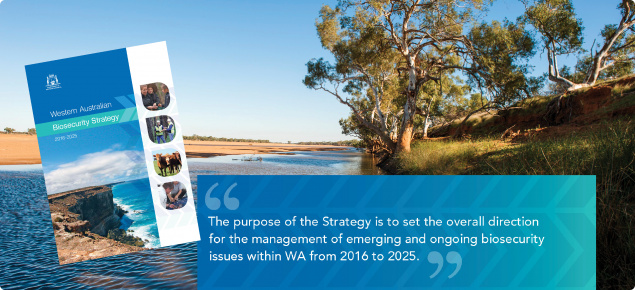Biosecurity incursions have the capacity to increase costs and disrupt export and domestic trade of agricultural, forest, aqua culture/fish products, as well as affecting our unique environment, biodiversity and social amenity.
Western Australia is fortunate to be free of many of the major animal and plant pests and diseases that occur elsewhere. Effective biosecurity management underpins the state’s reputation as a supplier of clean, safe, high quality food, and valuable market access and trade arrangements. Of equal importance is keeping our marine areas, conservation areas and unique natural ecosystems free from damaging pests.
The development of the Western Australia’s Biosecurity Strategy (‘the Strategy’) led by government and informed by industry and community, sets the strategic direction for partnership arrangements to manage biosecurity issues affecting agriculture, fisheries, forests and biodiversity in our terrestrial and aquatic environments.
The Strategy covers animal and plant pests and diseases, including weeds and animal diseases that can be transmitted between animals and humans (zoonotic diseases). It doesn't include chemical contamination or residue issues, animal welfare, food safety or human health (except zoonoses), or genetically modified organisms. The Strategy addresses the period 2016 to 2025.
The Strategy discusses the importance of biosecurity to Western Australia, the increasing challenges in managing biosecurity, the biosecurity continuum, and federal and state partnerships and frameworks.
The Strategy lists three principles that will underpin Western Australia’s biosecurity system. Seven goals considered essential to refining Western Australia's biosecurity system are identified, and for each goal, outcomes and tactics are outlined. Four different case studies are included to explain how government organisations, industry and community work together to manage pests and diseases in the preparedness, eradication, containment and management phases.
The Department of Primary Industries and Regional Development has taken the lead role in developing the Strategy, in partnership with the Department of Biodiversity, Conservation and Attractions, Forest Products Commission and Department of Premier and Cabinet.
A full copy of the strategy is available to download on the right side of this page.

